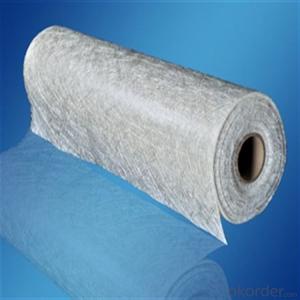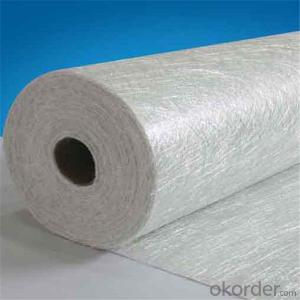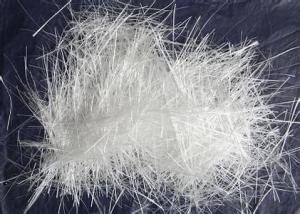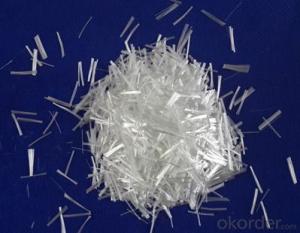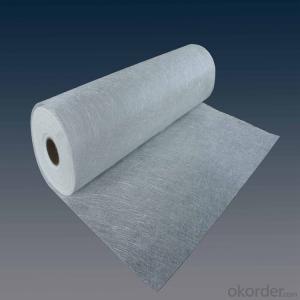558 E Glass Fiber Chopped Strands For BMC
- Loading Port:
- Shanghai
- Payment Terms:
- TT or LC
- Min Order Qty:
- 1000 kg
- Supply Capability:
- 1000000 kg/month
OKorder Service Pledge
OKorder Financial Service
You Might Also Like
558 Chopped Strands
558 Chopped Strands are specifically designed to reinforce phenolic resin. They are coated with a silane-based sizing and have excellent dry flowability and strand dispersion. 558 are designed for use in the compression molding process to manufacture automobile brake shoe facings, clutch facings, and friction plates.
Product Features:
·Good strand integrity and low static
·Low fuzz and good flowability
·Fast and uniform distribution in resins and good processing properties
·Good mechanical properties
Technical Parameters:
Item | Filament diameter variation | Moisture content | Sizing content | Chopped length variation | Choppability |
Unit | % | % | % | mm | % |
Test menthod | ISO 1888 | ISO 3344 | ISO 1887 | Q/JS J0361 | Q/JS J0362 |
Standard range | ± 10 | ≤ 0.07 | 0.85 ± 0.15 | ± 1.00 | ≥ 99.00 |
Typical chopped length (mm):3mm,4.5mm,6mm,12mm
Instructions:
·The product is best used within 12 months after production, and should be kept in the original package before use.
·Care should be taken when using the product to prevent it from being scratched or damaged.
·The temperature and humidity of the product should be conditioned to be close or equal to the ambient temperature and humidity before use, and the ambient temperature and humidity should be properly controlled during the use.
Packaging:
The product can be packed in container bags or woven bags:
- A container bag can hold 900kg~1200kg of products, with the standard weight being 1000kg.
- A woven bag can hold 15kg~30kg of products, with the standard weight being 25kg.
Container bag size:
Length mm(in):990 (38.98)
Width mm(in) :990 (38.98)
Height mm(in) :1100 (43.31)
Woven bag size:
Length mm(in):850 (33.46)
Width mm(in) :500 (19.69)
Height mm(in) :120 (4.72)
Storage:
Unless otherwise specified, the fiberglass products should be stored in a dry,cool and moisture-proof area.The best temperature and humidity should be maintained at -10℃~35℃ and ≤80% respectively. To ensure safety and avoid damage to the product, the pallets should be stacked not more than three layers high. When the pallets are stacked in two or three layers, special care should be taken to correctly and smoothly move the upper pallet
- Q: Can fiberglass chopped strand be used in the production of electrical circuit boards?
- No, fiberglass chopped strand is not typically used in the production of electrical circuit boards. Circuit boards are usually made from materials such as epoxy resin, copper, and various types of laminates, which provide the necessary electrical properties and reliability required for circuitry.
- Q: Characteristics of GRC European lines
- Horizontal and 45 degree diagonal line
- Q: What is fiberglass chopped strand?
- Fiberglass chopped strand refers to tiny strands of fiberglass that have been cut into short lengths, typically ranging from 1/8 inch to 2 inches. These strands are made from molten glass that is drawn into fine filaments, then chopped into small pieces. The resulting chopped strand is used as a reinforcement material in various industries, including automotive, construction, and marine. It is commonly mixed with other materials, such as resins or plastics, to create composite materials with enhanced strength and durability. Fiberglass chopped strand offers excellent mechanical properties, including high tensile strength, low weight, and resistance to corrosion and chemicals. It is widely used in applications such as insulation, reinforcing concrete, manufacturing of pipes and tanks, and producing fiberglass-reinforced plastics. Overall, fiberglass chopped strand plays a crucial role in improving the performance and longevity of a wide range of products and materials.
- Q: What are the flexural modulus properties of fiberglass chopped strand?
- The flexural modulus properties of fiberglass chopped strand refer to its ability to resist deformation when subjected to bending or flexing forces. Fiberglass chopped strand is known for its high flexural modulus, which means it has a high resistance to bending and maintains its shape under stress. This property is a result of the reinforcing fibers in the fiberglass, which provide strength and rigidity to the material. The flexural modulus of fiberglass chopped strand can vary depending on factors such as the length and orientation of the fibers, the resin matrix used, and the manufacturing process. However, in general, fiberglass chopped strand exhibits excellent flexural modulus properties, making it a popular choice for applications that require structural strength and stiffness.
- Q: Is fiberglass chopped strand suitable for thermal insulation?
- Yes, fiberglass chopped strand is suitable for thermal insulation. It is commonly used in construction and manufacturing to provide effective insulation against heat transfer, helping to maintain desired temperatures and reduce energy consumption.
- Q: What are the typical additives used with fiberglass chopped strand composites?
- The typical additives used with fiberglass chopped strand composites include resin binders, fillers, coupling agents, and processing aids. Resin binders are used to hold the chopped strands together and improve the composite's strength and durability. Fillers such as calcium carbonate or talc can be added to enhance hardness or reduce cost. Coupling agents improve the adhesion between the fibers and the resin matrix, while processing aids like lubricants or anti-static agents help with the manufacturing process.
- Q: Can fiberglass chopped strand be used in chemical resistant applications?
- No, fiberglass chopped strand is not typically used in chemical resistant applications. While fiberglass is known for its strength and durability, it is not inherently resistant to many chemicals. In applications where resistance to chemicals is required, other materials such as specialty resins or coatings that are designed to withstand specific chemicals are typically used instead. These materials provide a higher level of chemical resistance and protect against corrosion or degradation caused by exposure to harmful substances. Therefore, it is recommended to consider alternative materials that are specifically formulated to meet the chemical resistance requirements of the application.
- Q: Is fiberglass chopped strand water-resistant?
- Yes, fiberglass chopped strand is water-resistant.
- Q: Can fiberglass chopped strand be used to reinforce concrete?
- Fiberglass chopped strand is capable of reinforcing concrete. By incorporating the chopped strands into concrete mixtures, the concrete gains supplementary tensile strength, impact resistance, and durability. The fiberglass strands function as a reinforcement material, effectively managing cracking and enhancing the overall structural integrity. This proves particularly advantageous in scenarios where concrete may encounter substantial loads or harsh environmental circumstances. Moreover, fiberglass chopped strand is not only lightweight but also resistant to corrosion, rendering it an optimal selection for concrete reinforcement.
- Q: What are the typical manufacturing challenges when using fiberglass chopped strand composites?
- Several typical challenges may arise when utilizing fiberglass chopped strand composites in manufacturing. One of the challenges commonly encountered is the attainment of uniform fiber dispersion throughout the composite material. It is crucial to employ proper mechanical mixing and dispersing techniques to ensure even distribution of the chopped fiberglass strands within the matrix. Failure to achieve this can result in weak areas and diminished mechanical properties in the final product. Another challenge is the achievement of good wet-out between the resin matrix and the chopped strands. Each individual strand must be thoroughly wetted by the resin to ensure proper bonding and strength. Insufficient wet-out can lead to the formation of voids, delamination, and reduced overall performance of the composite. Controlling the length of the fibers is also a challenge. Chopped strand composites generally consist of short fibers, and maintaining consistent fiber length is critical for attaining desired mechanical properties. Variations in fiber length can cause inconsistencies in strength and stiffness, which affects the overall performance of the composite. Additionally, fiber alignment can present difficulties during the manufacturing process. Proper orientation and alignment of the chopped fibers within the matrix are vital for optimizing mechanical properties. Misalignment or random orientation of fibers can result in anisotropic properties and reduced overall strength. Lastly, challenges related to surface finish and appearance may arise. Chopped strand composites often exhibit a rough surface due to the presence of randomly oriented fibers. Achieving a smooth and aesthetically pleasing finish may necessitate additional processing steps, such as sanding or application of surface coatings. In conclusion, these challenges necessitate meticulous process control, optimization of mixing techniques, and implementation of quality control measures to ensure the successful utilization of fiberglass chopped strand composites in manufacturing.
Send your message to us
558 E Glass Fiber Chopped Strands For BMC
- Loading Port:
- Shanghai
- Payment Terms:
- TT or LC
- Min Order Qty:
- 1000 kg
- Supply Capability:
- 1000000 kg/month
OKorder Service Pledge
OKorder Financial Service
Similar products
Hot products
Hot Searches
Related keywords









